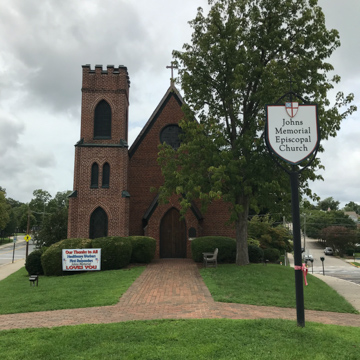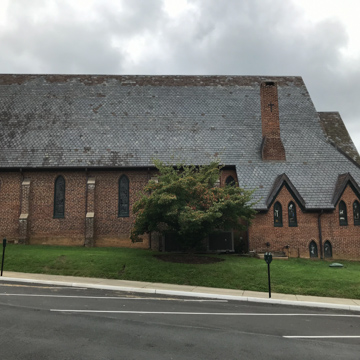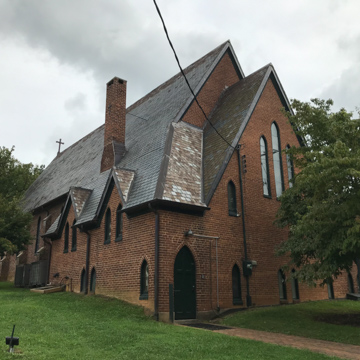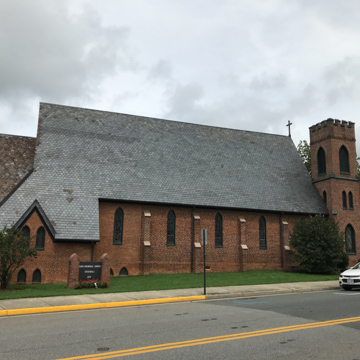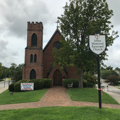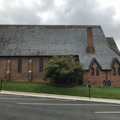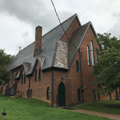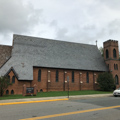Named for John Johns, bishop of Virginia from 1862 to 1876, this Episcopal church occupies a conspicuous triangular block between High, Buffalo, and St. George streets. The church's Gothic styling contrasts sharply with the less Academic Gothic of the Farmville United Methodist Church (PE5). The red brick walls with lancet windows and narrow buttresses are kept low to increase the drama of the steep roof. Covered in Buckingham slate laid in an understated decorative pattern, the lower section of the roof wraps around the corners of the building onto the front and rear, a feature repeated in a small projecting vestibule and chancel. The three-stage battlemented corner tower with an open belfry was added later, but fits the overall design concept of the church.
You are here
Johns Memorial Episcopal Church
If SAH Archipedia has been useful to you, please consider supporting it.
SAH Archipedia tells the story of the United States through its buildings, landscapes, and cities. This freely available resource empowers the public with authoritative knowledge that deepens their understanding and appreciation of the built environment. But the Society of Architectural Historians, which created SAH Archipedia with University of Virginia Press, needs your support to maintain the high-caliber research, writing, photography, cartography, editing, design, and programming that make SAH Archipedia a trusted online resource available to all who value the history of place, heritage tourism, and learning.















